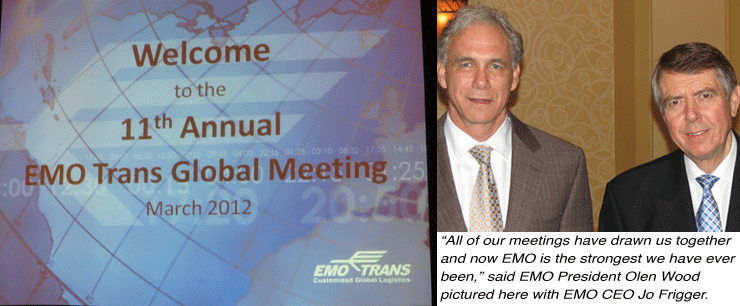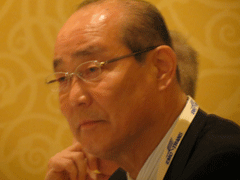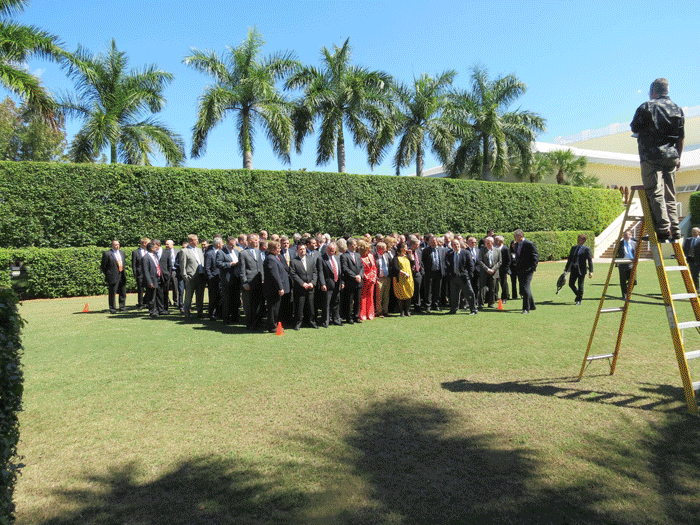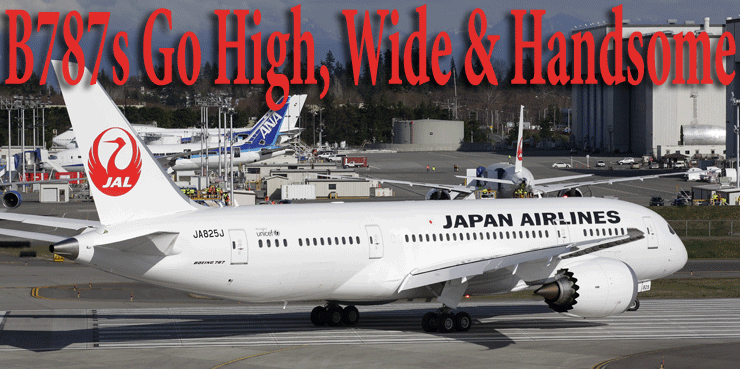 |
 |
|
| |
||
|
Open meetings done and everyone dressed smartly in the garden outside, as the Florida sun poured over a photo-op gemütlichkeit moment. At EMO Trans Global
Network Meeting in Bonita Springs, Florida, EMO President Olen Woods
began the open business meeting by counting down the past 10 years
that this company has gathered, saying:
|
 |
“We told
them that we were aware that their company was utilizing several
bigger resources for their shipping needs, and after naming the
names we said that we were wondering if there was anything that
would prevent them from continuing to do business with EMO.
“The client said we had named
some other companies that they did not like at all!
“What we care for is value for
money, data, service, commitment, consistency.
“EMO kept the client because
on those points, we can compete with anyone.”
In his remarks, CEO Jo Frigger told
the audience gathered from EMO offices around the world:
“The meetings of our global
alliance have become a tradition of developing relationships while
making new friends.
“The backdrop to all of this
is the many groups of forwarders who attempt to form alliances.
“EMO’s group of network
partners is among the strongest forwarder alliances in the world
and our growth is due in no small part to our ability to build success
upon success by utilizing our strengths.
“Mutual trust and the possibility
to develop new business is a must and we remain determined to continually
better ourselves through innovation and upgrading of our systems.
“One area I am happy to report
has been greatly enhanced, is EMO IT.
“Demands for information from
both our customers and also from government security and others
have resulted in implementation of a new information system that
went live in early January 2012; it is a major step in what will
greatly enhance information and transparency in every phase of the
shipping process.”
Thomas Huchler, EMO Trans Germany,
led the parade of what’s new and next, as he discussed recent
 development
of EMO Log, which did not exist a year ago, but today is a multi-million
dollar logistics company providing fulfillment service for Brooks
Running Shoes and other companies, including a U.S.-based auto parts
manufacturer with a distribution set up in Muenster, Germany.
development
of EMO Log, which did not exist a year ago, but today is a multi-million
dollar logistics company providing fulfillment service for Brooks
Running Shoes and other companies, including a U.S.-based auto parts
manufacturer with a distribution set up in Muenster, Germany.
“We have as a 3PL, literally
come up from nothing utilizing our synergies with EMO Trans and
are on a steady growth spiral adding new business.
“EMO Log is the result of our
long-standing, excellent relationship with Brooks on the shipping
side and their desire in 2012 for full service logistics to get
their goods to consumers,” Thomas Huchler said.
The next speaker Ian Ahern, Managing
Director-EMO Trans Australia got some attention as he stood up and
said out loud:
“There are still plenty of opportunities
to build new business even as the Asian market currently recedes
a bit, and we happen to live next door to one of them.
“Papua, New Guinea has most
recently become a market that is in rapid need of almost everything,
driven by vast oil fields under development.
“Infrastructure is minimal and
costs are quite high in addition to other business challenges, both
with the government and also with building a culture for air cargo
across the country.”
But under Nalin Rodrigo, Air Niugini
Cargo has been working to add air cargo services, including freighters,
to their program.
At the same time, EMO Trans Australia
is involved almost alone in developing transportation connections
via Port Moresby to facilitate bringing all manner of consumer goods
and oil equipment into the country.
 “The task of developing a market
in this case is both exciting and daunting, because basically there
is nothing there and everything has to be brought in.
“The task of developing a market
in this case is both exciting and daunting, because basically there
is nothing there and everything has to be brought in.
“But we know that there are
markets out there if you are willing to search for them and then
roll up your sleeves and make things work,” Ian Ahern said.
Underscoring EMO Trans’ growing
Asian presence were Masa (right) Shimizu, Managing Director &
CEO and Kiyoshi Ishii, Director International Strategy of AKL Tokyo,
the newest partner members of the network.
Mr. Shimizu, AKL CEO, noted that he
is now 100% owner of AKL, and with that the executive promised a
higher standard of knowledgeable, hands-on, personalized services
from a company that in the near future will also have a new name.
“Our 44 employees are very well
versed on the specifics of moving freight in and out of Japan with
specific knowledge of the very complex import and export restrictions.
“We are looking to increase
our portfolio of small- to medium-sized customers,” Mr. Shimizu
said.
 A
breezy approach from Michael Austin and Tucker White, both of Maersk
Line, included a tag team presentation with Austin (a global Maersk
sales executive) inviting the audience to contact him as resource
for all things Maersk.
A
breezy approach from Michael Austin and Tucker White, both of Maersk
Line, included a tag team presentation with Austin (a global Maersk
sales executive) inviting the audience to contact him as resource
for all things Maersk.
“I will be your escalation point,”
he said.
Tucker White (who is the local Florida
USA sales executive) also chimed in, taking the opportunity to say
“thank you” to EMO, which counts ocean as a vital part
of its business.
“Maersk is phenomenal growth,”
Michael Austin said, “despite costs of fuel and some lane
traffic slowdown due to the Asian situation and the Eurozone financial
crises.”
But Maersk is there despite flagging
consumer confidence.
In the USA, business is improving
as manufacturing is increasing.
“We see growth in Latin America
and Africa, but business is flat to marginally improving from Asia
to the USA.
 “Measuring Europe to USA, the
trade by ocean is essentially balanced.
“Measuring Europe to USA, the
trade by ocean is essentially balanced.
“What is it about Maersk?
“We are 88 percent on time and
that number includes our partner’s vessels, and our goal is
95 percent for 2012.”
Then Ausin told this expert logistics
audience:
“Maersk has recently operated
inland, moving shipments from our vessels via rail to cut delivery
times.”
Brendan Furlong, (left) Emirates SkyCargo
Business Development Manager, USA, told EMO conferees that the build
up in new aircraft at the booming Dubai-based carrier will continue,
with dozens of Airbus A380s and B777s yet to join the fleet.
“We took delivery of the 1000th
B777 earlier this month as Emirates launched daily services from
Seattle to Dubai.”
Currently more than 10 percent of
all B777s ever built are in Emirates livery.
Emirates is adding services to Washington,
D.C., this September 12 and with Dallas has added three new U.S.
gateways in 2012, with more planned during the next few years.
“In terms of air cargo, Gateway
Dubai continues to build success upon success as the true global
crossroads with state-of-the-art modern facilities and up-to-date
information technologies, coupled with the most advanced systems
to expedite shipments.”
 As the EMO public sessions moved toward
conclusion, Kim Ekstroem, Vice President of Shipco Transport noted
that Shipco, which, once upon a time, as a neutral wholesaler was
mainly ocean, is today also quite successfully expanding its services
into air cargo.
As the EMO public sessions moved toward
conclusion, Kim Ekstroem, Vice President of Shipco Transport noted
that Shipco, which, once upon a time, as a neutral wholesaler was
mainly ocean, is today also quite successfully expanding its services
into air cargo.
“The TSA mandates afforded us
that opportunity because we had the screening facilities, and customers
realized our infrastructure offered an ideal platform to also handle
air.
“We are increasing our impact
on both businesses with sea-air combinations as well,” Mr.
Ekstroem said.
Geoffrey
Incheon Airport International is the
world’s second largest cargo airport and also home to Korean
Air, the world’s second biggest carrier by international cargo
tonnage after Cathay Pacific. |
Japan Airlines Boeing 787s ready for takeoff alongside a plane with the livery of competitor All Nippon Airways, upper left, and another JAL 787 on Monday, March 26, 2012, in Everett, Washington. JAL will press aircraft into service on long thin routes that never featured non-stop service to Japan, including Boston/Tokyo next month and San Diego/Tokyo later this year. |






